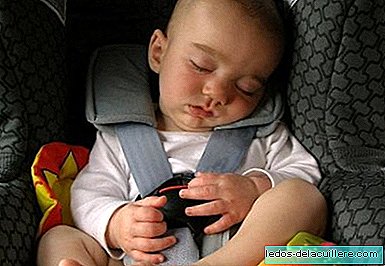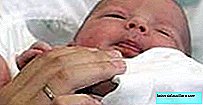
We have already commented on the blog that for children the front seat of the car is the most dangerous, although it is not forbidden to be in this place where child restraint systems go. But children go safer in the backseat of the car.
The Technical Report of the American Academy of Pediatrics (AAP) on the safety of the child passenger of motor vehicles demonstrates this, and the Academy continues to recommend the inclusion of road safety advice for the child as a passenger in each visit of the child health program .
One of these recommendations is that all children under 13 must use a restraint system in the back seats of the vehicle for optimal protection.
Nor in the United States is there a uniform law in all states and in Spain the law in force in this regard (Royal Decree 965/2006, of September 1) says, in article 117, section 2, letter a:
Regarding the front seats of the vehicle: it is prohibited to drive with children under twelve years of age located in the front seats of the vehicle unless they use devices approved for this purpose. Exceptionally, when their height is equal to or greater than 135 centimeters, children under the age of twelve may use as such a device the safety belt for adults that the front seats are equipped with.
That is, they can circulate in the front seats with child restraint systems (SRI) or seatbelts, depending on their height.
Several studies have been published that document the benefit of children traveling in the seats behind, although on the fact of placing the SRIs on the sides or in the center of the back seat there is no unanimity.
In a study conducted in the USA. UU. With 5751 children under 15 occupying vehicles that had suffered a serious traffic accident, being seated in the back seat had a protective effect on serious injury or death.
In another study conducted in Australia, the risk of death in children under four years of age traveling in a crashed car was double if they did it in the front seat and four times more if they were under one year old.
A third study that reaches similar results also specifies that there is no difference in the risk of injury if the child is between 13 and 15 years old.
And not only the overall risk of injury is higher in the front seats, but also the severity of the injuries as analyzed in a study conducted by the CIREN institution (Crash Injury Research Engineering Network).
Two studies provide discordant results on whether the optimal place for a child to travel, between the rear seats, is the central seat. In one there are no differences in the risk of injury when comparing the position of the child in the back central seat against the left and right. However, other research does find a lower risk in the central rear seat. The authors of the AAP report suggest that the difference in results between these two studies could be due to the different definition made in each of them.
In Spain, pediatricians in consultations also usually refer to safety measures for children, and usually remember that children must travel by car subject to the appropriate restraint system, but without specifying the place.
In short, studies show that we must recommend that children travel in the back seat, preferably the central according to the authors of Perlinfad, subjects in a retention system appropriate to their weight and height. And this although, as in fact, the law allows children to travel in the passenger seat.












